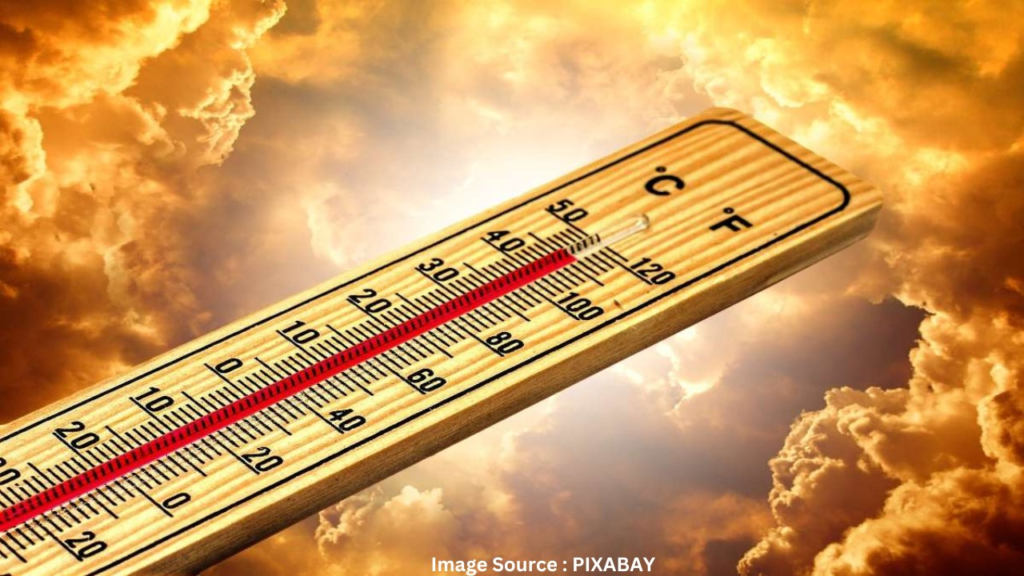On December 1, PM Narendra Modi will be in Dubai for the World Climate Action Summit. Heads of state, representatives from industry, civil society, youth, frontline communities, science, and other fields will be debating strategies and actions meant to accelerate climate action at the summit.

The Ministry of External Affairs (MEA) said in a statement on Sunday that Prime Minister Narendra Modi will attend the World Climate Action Summit in Dubai on December 1.
According to the statement, the prime minister will go to the United Arab Emirates (UAE) on November 30 to attend the UN climate discussions at the request of H.H. Sheikh Mohamed bin Zayed Al Nahyan, the President of the UAE and the ruler of Abu Dhabi.
The United Nations Framework Convention on Climate Change’s (UNFCCC) 28th Conference of Parties (COP-28) High-Level Segment is called the World Climate Action Summit. COP-28 is being hosted by the UAE from November 28, 2023, to December 12, 2023.
India’s climate change projects in Dubai
In stark contrast, India has only produced 5% of greenhouse gas emissions to date despite making up 18% of the world’s population, while the US has contributed 17% of global emissions for over 170 years despite only making up 4% of the global population.

India has pledged to fulfil the objectives outlined in the 2015 Paris Agreement, especially the one to keep global warming well below 2 degrees Celsius. India wants to attain 50% installed capacity of non-fossil fuel-based electricity by 2030 and a 45% reduction in emissions intensity from 2005 levels by that same year.
India during the COP28
At the 28th session of the annual climate negotiations (COP28), Union Environment Minister Bhupender Yadav will take part in roundtables and high-level events covering topics such as financing climate objectives, emissions reduction, adaptation to climate consequences, and a shift to an inclusive green economy.
The UAE will preside over the COP28, which takes place from November 30 to December 12. During that time, the first “global stocktake”—a recurring evaluation of the group’s progress towards achieving the objectives of the Paris Agreement—will taking place. This evaluation will help build the next climate action plans, or NDCs, by 2025.
Intensive negotiations on financial help for developing and impoverished nations will take place throughout the summit. In order to keep global warming to 1.5 degrees Celsius caused by human activity, countries in the Global South are anticipated to call for quick decarbonization as well as increased financial and technological support.
Climate warming causes Earth to record the warmest 12-month period
According to weather attribution study, 5.7 billion individuals saw at least 30 days of above-average temperatures throughout the course of the 12-month period. These occurrences are at least three times more likely to be caused by climate change, or level three on Climate Central’s Climate Shift Index.

According to news agency ANI, which cited CBS News, the news branch of the American television and radio network CBS, a recent study conducted in the US revealed that the Earth experienced its hottest 12-month period ever. A Climate Central research states that between November 2022 and October 2023, the earth experienced almost 2.5 degrees Fahrenheit above average. Ninety percent of the global population and forty-nine percent of Americans, respectively, experienced at least ten days of extremely severe temperatures that were influenced by climate change, according to the report, which was carried by ANI.
In addition to heatwaves, people worldwide were also impacted by expensive and fatal wildfires, droughts, and extreme weather, according to ANI, which cited CBS News.
For the Twin Cities (1.4°F above average), Minnesota (1.3°F above average), and the US as a whole (1.1°F above average), November 22–October 23 was warm but not exceptionally so.
With Louisiana, Texas, Mississippi, and Florida placing top for their hottest November 2022 through October 2023 period, the Gulf Coast proved to be the hottest region in the United States.
What is said in the report by Climate Central?
Lesotho and Iceland were the only two nations worldwide with temperatures below average, while Europe and North Africa had the highest temperatures worldwide, according to the Climate Central study. Furthermore, some nations exceeded the norm by more than 3°F, according to ANI.
According to weather attribution study, 5.7 billion individuals saw at least 30 days of above-average temperatures throughout the course of the 12-month period. These occurrences are at least three times more likely to be caused by climate change, or level three on Climate Central’s Climate Shift Index.
Nearly all citizens of the following countries were exposed: Bangladesh, Iran, Egypt, Ethiopia, Nigeria, Italy, France, Spain, the United Kingdom, Brazil, Mexico, and all the countries in the Caribbean and Central America.
1.2 billion people, or 86% of the population, lived in India where temperatures were at least three degrees Celsius on 30 days in a row. That number was 513 million people, or 35% of the population, in China, and 88 million people, or 26% of the population, in the United States, who had at least 30 days of temperatures that were at least three times more likely due to climate change.










